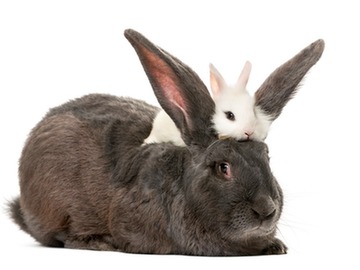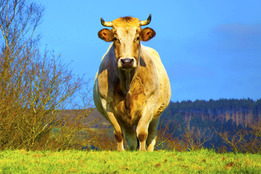Hare is the oldest name for these furry animals—it’s a word as old as English itself. Though hare is sometimes used interchangeably with rabbit, there are differences that involve both biology and terminology.

A 'jackrabbit' is really a hare, but a 'swamp hare' is really a rabbit.
Hare derives ultimately from the Old English word for “gray.” Rabbit entered the language from French in the 14th century. Though originally classified as rodents, both are now part of the order called lagomorphsplay (from the Greek words meaning “hare” and “form”), which differ from rodents by having two rows of upper incisors and by being herbivorous. Hares are distinguished from rabbits by their larger size, longer ears, and longer hind legs. They also tend to live alone or in pairs in above-ground nests, whereas rabbits often live together in groups of up to 20 in underground tunnels known as warrens.
Another important difference between hares and rabbits is the way their young are born: hares are born covered in fur and with open eyes, but rabbits are born furless, blind, and helpless.
The fact that they can be difficult to tell apart is also reflected in particular names: a jackrabbit is really a hare, but a swamp hare is really a rabbit. Coney is sometimes used to refer to an adult rabbit, and the terms buck, doe, and kitten or kit (for male, female, and young rabbits, respectively), though correct, are much more closely associated with other mammals.
The modern French word for “rabbit,” lapin, refers to a castrated male rabbit in English. Bunny (meaning simply “rabbit” or “a small rabbit”) comes from bun, a regional word used for both “rabbit” or “squirrel” in England going back to at least the 1500s. Easter Bunny comes from Easter Hare, a translation from the German of the term as well as the tradition—dating back at least as far as the late 1600s—in which a bunny brings eggs and gifts to children at Easter. Rabbits and eggs were both symbols of fertility and springtime that connected the religious and the secular at Easter.
As for those eggs: they were forbidden during Lent. That’s why people boiled them and waited until Easter to eat them.
MORE TO EXPLORE: What's the Difference Between ... ?




